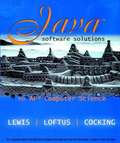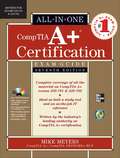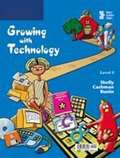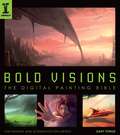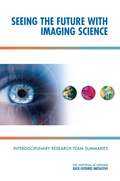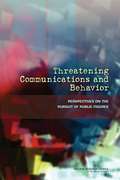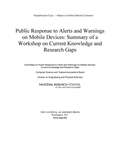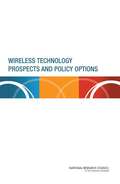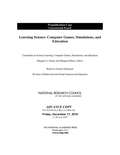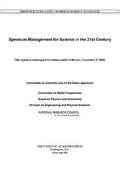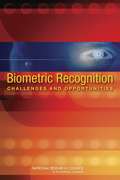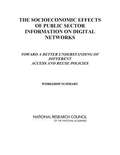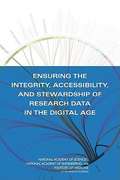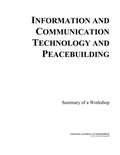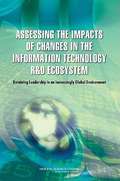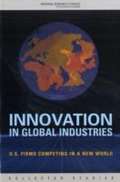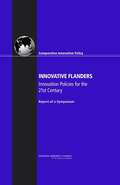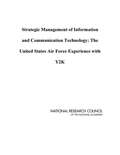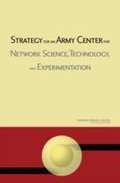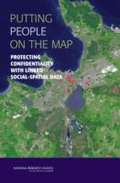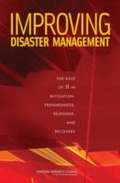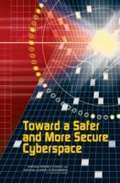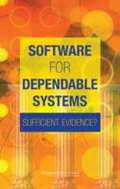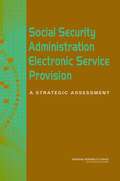- Table View
- List View
Java Software Solutions for AP Computer Science: Foundations for Program Design
by John Lewis William Loftus Cara CockingSpecifically designed for beginning programmers, this Advanced Placement book matches the AP Computer Science topic outline and Java subset set forth by the College Board.
Microsoft Excel 2010: Marquee Series
by Audrey Rutkosky Roggenkamp Denise Seguin Nita RutkoskyThis book outlines how to organize, analyze, and present data in Microsoft Excel 2010.
Comptia A+ Certification: All-in-One Exam Guide (7th Edition)
by Michael MeyersGet complete coverage of the latest release of the CompTIA A+ exams inside this fully revised and updated resource. Written by the leading authority on CompTIA A+ certification and training, this expert guide covers CompTIA A+ exams 220-701 and 220-702. You'll find learning objectives at the beginning of each chapter, exam tips, practice exam questions, in-depth explanations, and more than 1,000 photographs and illustrations. Designed to help you pass the CompTIA A+ exams with ease, this definitive volume also serves as an essential on-the-job IT reference. Covers all exam objectives, including how to: Work with CPUs, RAM, motherboards, power supplies, and other PC components Install, partition, and format hard drives Install, upgrade, and troubleshoot Windows 2000, Windows XP, and Windows Vista Troubleshoot PCs and implement security measures Install video and multimedia cards Work with portable PCs, PDAs, smartphones, and wireless technologies Manage printers and connect to networks and the Internet Understand safety and environmental issues Establish good communication skills and adhere to privacy policies The CD-ROM features: Practice exams for 701 & 702 600+ chapter review questions New video introduction to CompTIA A+ One-hour video training segment Mike's favorite PC tools and utilities Searchable e-book Mike Meyers, CompTIA A+, CompTIA Network+, MCP, is the industry's leading authority on CompTIA A+ certification and training. He is the president and founder of Total Seminars, LLC, a major provider of PC and network repair seminars for thousands of organizations throughout the world, and a member of CompTIA.
Growing with Technology (Level #3)
by Gary B. Shelly Thomas J. Cashman Rachel Biheller BuninThe computing fundamentals program is designed to prepare elementary students for a future using technology.
Bold Visions: The Digital Painting Bible
by Gary TongeThis comprehensive and up-to-date guide to the rapidly expanding area of digital painting features beautifully displayed finished works of art alongside practical demonstrations. Artists will learn to create a wide range of subject matter from futuristic spacescapes and revolutionary vehicles to medieval landscapes and beautiful maidens. An in-depth materials section introduces all the equipment you are likely to need, from computer hardware and software to more traditional art media. A detailed basic techniques section caters to both newcomers to the digital medium and those who wish to brush up on their skills.
Seeing the Future with Imaging Science: Interdisciplinary Research Team Summaries
by The National AcademiesImaging science has the power to illuminate regions as remote as distant galaxies, and as close to home as our own bodies. Many of the disciplines that can benefit from imaging share common technical problems, yet researchers often develop ad hoc methods for solving individual tasks without building broader frameworks that could address many scientific problems. At the 2010 National Academies Keck Futures Initiative Conference on Imaging Science, researchers from academia, industry, and government formed 14 interdisciplinary teams created to find a common language and structure for developing new technologies, processing and recovering images, mining imaging data, and visualizing it effectively. The teams spent nine hours over two days exploring diverse challenges at the interface of science, engineering, and medicine. NAKFI Seeing the Future with Imaging Science contains the summaries written by each team. These summaries describe the problem and outline the approach taken, including what research needs to be done to understand the fundamental science behind the challenge, the proposed plan for engineering the application, the reasoning that went into it, and the benefits to society of the problem solution.
Threatening Communications and Behavior: Perspectives on the Pursuit of Public Figures
by National Research Council of the National AcademiesToday's world of rapid social, technological, and behavioral change provides new opportunities for communications with few limitations of time and space. Through these communications, people leave behind an ever-growing collection of traces of their daily activities, including digital footprints provided by text, voice, and other modes of communication. Meanwhile, new techniques for aggregating and evaluating diverse and multimodal information sources are available to security services that must reliably identify communications indicating a high likelihood of future violence. In the context of this changed and changing world of communications and behavior, the Board on Behavioral, Cognitive, and Sensory Sciences of the National Research Council presents this volume of three papers as one portion of the vast subject of threatening communications and behavior. The papers review the behavioral and social sciences research on the likelihood that someone who engages in abnormal and/or threatening communications will actually then try to do harm. The focus is on how the scientific knowledge can inform and advance future research on threat assessments, in part by considering the approaches and techniques used to analyze communications and behavior in the dynamic context of today's world. The papers in the collection were written within the context of protecting high-profile public figures from potential attach or harm. The research, however, is broadly applicable to U.S. national security including potential applications for analysis of communications from leaders of hostile nations and public threats from terrorist groups. This work highlights the complex psychology of threatening communications and behavior, and it offers knowledge and perspectives from multiple domains that contribute to a deeper understanding of the value of communications in predicting and preventing violent behaviors.
Public Response to Alerts and Warnings on Mobile Devices: Summary of a Workshop on Current Knowledge and Research Gaps
by National Research Council of the National AcademiesThis book presents a summary of the Workshop on Public Response to Alerts and Warnings on Mobile Devices: Current Knowledge and Research Gaps, held April 13 and 14, 2010, in Washington, D.C., under the auspices of the National Research Council's Committee on Public Response to Alerts and Warnings on Mobile Devices: Current Knowledge and Research Needs. The workshop was structured to gather inputs and insights from social science researchers, technologists, emergency management professionals, and other experts knowledgeable about how the public responds to alerts and warnings, focusing specifically on how the public responds to mobile alerting.
Wireless Technology Prospects and Policy Options
by National Research Council of the National AcademiesThe use of radio-frequency communication--commonly referred to as wireless communication--is becoming more pervasive as well as more economically and socially important. Technological progress over many decades has enabled the deployment of several successive generations of cellular telephone technology, which is now used by many billions of people worldwide; the near-universal addition of wireless local area networking to personal computers; and a proliferation of actual and proposed uses of wireless communications. The flood of new technologies, applications, and markets has also opened up opportunities for examining and adjusting the policy framework that currently governs the management and use of the spectrum and the institutions involved in it, and models for allocating spectrum and charging for it have come under increasing scrutiny. Yet even as many agree that further change to the policy framework is needed, there is debate about precisely how the overall framework should be changed, what trajectory its evolution should follow, and how dramatic or rapid the change should be. Many groups have opinions, positions, demands, and desires related to these questions--reflecting multiple commercial, social, and political agendas and a mix of technical, economic, and social perspectives. The development of technologies and associated policy and regulatory regimes are often closely coupled, an interplay apparent as early as the 1910s, when spectrum policy emerged in response to the growth of radio communications. As outlined in this report, current and ongoing technological advances suggest the need for a careful reassessment of the assumptions that inform spectrum policy in the United States today. This book seeks to shine a spotlight on 21st-century technology trends and to outline the implications of emerging technologies for spectrum management in ways that the committee hopes will be useful to those setting future spectrum policy.
The Future of Computing Performance: Game Over or Next Level?
by National Research Council of the National AcademiesThe end of dramatic exponential growth in single-processor performance marks the end of the dominance of the single microprocessor in computing. The era of sequential computing must give way to a new era in which parallelism is at the forefront. Although important scientific and engineering challenges lie ahead, this is an opportune time for innovation in programming systems and computing architectures. We have already begun to see diversity in computer designs to optimize for such considerations as power and throughput. The next generation of discoveries is likely to require advances at both the hardware and software levels of computing systems. There is no guarantee that we can make parallel computing as common and easy to use as yesterday's sequential single-processor computer systems, but unless we aggressively pursue efforts suggested by the recommendations in this book, it will be "game over" for growth in computing performance. If parallel programming and related software efforts fail to become widespread, the development of exciting new applications that drive the computer industry will stall; if such innovation stalls, many other parts of the economy will follow suit. The Future of Computing Performance describes the factors that have led to the future limitations on growth for single processors that are based on complementary metal oxide semiconductor (CMOS) technology. It explores challenges inherent in parallel computing and architecture, including ever-increasing power consumption and the escalated requirements for heat dissipation. The book delineates a research, practice, and education agenda to help overcome these challenges. The Future of Computing Performance will guide researchers, manufacturers, and information technology professionals in the right direction for sustainable growth in computer performance, so that we may all enjoy the next level of benefits to society.
Spectrum Management for Science in the 21st Century
by National Research Council of the National AcademiesRadio observations of the cosmos are gathered by geoscientists using complex earth-orbiting satellites and ground-based equipment, and by radio astronomers using large ground-based radio telescopes. Signals from natural radio emissions are extremely weak, and the equipment used to measure them is becoming ever-more sophisticated and sensitive. The radio spectrum is also being used by radiating, or "active," services, ranging from aircraft radars to rapidly expanding consumer services such as cellular telephones and wireless internet. These valuable active services transmit radio waves and thereby potentially interfere with the receive-only, or "passive," scientific services. Transmitters for the active services create an artificial "electronic fog" which can cause confusion, and, in severe cases, totally blinds the passive receivers. Both the active and the passive services are increasing their use of the spectrum, and so the potential for interference, already strong, is also increasing. This book addresses the tension between the active services' demand for greater spectrum use and the passive users' need for quiet spectrum. The included recommendations provide a pathway for putting in place the regulatory mechanisms and associated supporting research activities necessary to meet the demands of both users.
Biometric Recognition: Challenges and Opportunities
by National Research Council of the National AcademiesBiometric recognition--the automated recognition of individuals based on their behavioral and biological characteristic--is promoted as a way to help identify terrorists, provide better control of access to physical facilities and financial accounts, and increase the efficiency of access to services and their utilization. Biometric recognition has been applied to identification of criminals, patient tracking in medical informatics, and the personalization of social services, among other things. In spite of substantial effort, however, there remain unresolved questions about the effectiveness and management of systems for biometric recognition, as well as the appropriateness and societal impact of their use. Moreover, the general public has been exposed to biometrics largely as high-technology gadgets in spy thrillers or as fear-instilling instruments of state or corporate surveillance in speculative fiction. Now, as biometric technologies appear poised for broader use, increased concerns about national security and the tracking of individuals as they cross borders have caused passports, visas, and border-crossing records to be linked to biometric data. A focus on fighting insurgencies and terrorism has led to the military deployment of biometric tools to enable recognition of individuals as friend or foe. Commercially, finger-imaging sensors, whose cost and physical size have been reduced, now appear on many laptop personal computers, handheld devices, mobile phones, and other consumer devices. Biometric Recognition: Challenges and Opportunities addresses the issues surrounding broader implementation of this technology, making two main points: first, biometric recognition systems are incredibly complex, and need to be addressed as such. Second, biometric recognition is an inherently probabilistic endeavor. Consequently, even when the technology and the system in which it is embedded are behaving as designed, there is inevitable uncertainty and risk of error. This book elaborates on these themes in detail to provide policy makers, developers, and researchers a comprehensive assessment of biometric recognition that examines current capabilities, future possibilities, and the role of government in technology and system development.
The Socioeconomic Effects of Public Sector Information on Digital Networks: Toward a Better Understanding of Different Access and Reuse Policies - Workshop Summary
by National Research Council of the National AcademiesWhile governments throughout the world have different approaches to how they make their public sector information (PSI) available and the terms under which the information may be reused, there appears to be a broad recognition of the importance of digital networks and PSI to the economy and to society. However, despite the huge investments in PSI and the even larger estimated effects, surprisingly little is known about the costs and benefits of different information policies on the information society and the knowledge economy. By understanding the strengths and weaknesses of the current assessment methods and their underlying criteria, it should be possible to improve and apply such tools to help rationalize the policies and to clarify the role of the internet in disseminating PSI. This in turn can help promote the efficiency and effectiveness of PSI investments and management, and to improve their downstream economic and social results. The workshop that is summarized in this volume was intended to review the state of the art in assessment methods and to improve the understanding of what is known and what needs to be known about the effects of PSI activities.
Ensuring the Integrity, Accessibility, and Stewardship of Research Data in the Digital Age
by Institute of MedicineAs digital technologies are expanding the power and reach of research, they are also raising complex issues. These include complications in ensuring the validity of research data; standards that do not keep pace with the high rate of innovation; restrictions on data sharing that reduce the ability of researchers to verify results and build on previous research; and huge increases in the amount of data being generated, creating severe challenges in preserving that data for long-term use. Ensuring the Integrity, Accessibility, and Stewardship of Research Data in the Digital Age examines the consequences of the changes affecting research data with respect to three issues - integrity, accessibility, and stewardship-and finds a need for a new approach to the design and the management of research projects. The report recommends that all researchers receive appropriate training in the management of research data, and calls on researchers to make all research data, methods, and other information underlying results publicly accessible in a timely manner. The book also sees the stewardship of research data as a critical long-term task for the research enterprise and its stakeholders. Individual researchers, research institutions, research sponsors, professional societies, and journals involved in scientific, engineering, and medical research will find this book an essential guide to the principles affecting research data in the digital age.
Information and Communication Technology and Peacebuilding: July 2008
by National Academy of Engineering of the National AcademiesThose who would use information and communication technology (ICT) in the cause of peace need to be cognizant of the risks as well as the benefits. ICT can facilitate positive dialogue but also hate speech. It can be used to fight corruption but also facilitate it. Simply giving people more information does not necessarily lead to predictable or positive results. As people become more informed, they may become more motivated to change their circumstances and to do so violently. On December 14, 2007, the National Academy of Engineering (NAE) convened a group of experts in diverse fields to consider the role of ICT in promoting peace and conflict resolution. The one-day workshop was designed to consider current and emerging technologies and strategies for employing them in conflict management and diplomacy. It also aimed to explore how organizations with a role in promoting peace, like the U.S. Institute of Peace, can most effectively leverage technology in carrying out their missions. Information and Communication Technology and Peacebuilding: Summary of a Workshop reviews the group’s discussions on number of key issues, illuminates certain practitioner needs, and suggests possible next steps.
ASSESSING THE IMPACTS OF CHANGES IN THE INFORMATION TECHNOLOGY R&D ECOSYSTEM: Retaining Leadership in an Increasingly Global Environment
by National Research Council of the National AcademiesThe U.S. information technology (IT) research and development (R&D) ecosystem was the envy of the world in 1995. However, this position of leadership is not a birthright, and it is now under pressure. In recent years, the rapid globalization of markets, labor pools, and capital flows have encouraged many strong national competitors. During the same period, national policies have not sufficiently buttressed the ecosystem, or have generated side effects that have reduced its effectiveness. As a result, the U.S. position in IT leadership today has materially eroded compared with that of prior decades, and the nation risks ceding IT leadership to other nations within a generation. Assessing the Impacts of Changes in the Information Technology R&D Ecosystem calls for a recommitment to providing the resources needed to fuel U.S. IT innovation, to removing important roadblocks that reduce the ecosystem's effectiveness in generating innovation and the fruits of innovation, and to becoming a lead innovator and user of IT. The book examines these issues and makes recommendations to strengthen the U.S. IT R&D ecosystem.
Innovation In Global Industries: U.s. Firms Competing In A New World
by National Research Council of the National AcademiesThe debate over offshoring of production, transfer of technological capabilities, and potential loss of U.S. competitiveness is a long-running one. Prevailing thinking is that “the world is flat”—that is, innovative capacity is spreading uniformly; as new centers of manufacturing emerge, research and development and new product development follow. Innovation in Global Industries challenges this thinking. The book, a collection of individually authored studies, examines in detail structural changes in the innovation process in 10 service as well as manufacturing industries: personal computers; semiconductors; flat-panel displays; software; lighting; biotechnology; pharmaceuticals; financial services; logistics; and venture capital. There is no doubt that overall there has been an acceleration in global sourcing of innovation and an emergence of new locations of research capacity and advanced technical skills, but the patterns are highly variable. Many industries and some firms in nearly all industries retain leading-edge capacity in the United States. However, the book concludes that is no reason for complacency about the future outlook. Innovation deserves more emphasis in firm performance measures and more sustained support in public policy. Innovation in Global Industries will be of special interest to business people and government policy makers as well as professors, students, and other researchers of economics, management, international affairs, and political science.
INNOVATIVE FLANDERS: Innovation Policies for the 21st Century
by National Research Council of the National AcademiesRecognizing that innovation is the key to international competitiveness in the 21st century, policymakers around the world are seeking more effective ways to translate scientific and technological knowledge into new products, processes, and businesses. They have initiated major programs, often with substantial funding, that are designed to attract, nurture, and support innovation and high-technology industries within their national economies. To help U.S. policymakers become more aware of these developments, a committee of the National Academies' Board on Science, Technology, and Economic Policy undertook a review of the goals, concept, structure, operation, funding levels, and evaluation efforts of significant innovation programs around the world. As a part of this effort, the committee identified Flanders, a region of Belgium with substantial autonomy, which is recognized for its comprehensive approach to innovation. Based on initial meetings in Washington and Brussels, and with the endorsement of Flanders Vice Minister-President Fientje Moerman, it was agreed to organize a conference that would review regional innovation policies in the context of the policies and programs of the Flanders government, and their interaction with those of the European Union. This book provides a summary of that symposium.
Strategic Management of Information and Communication Technology: The United States Air Force Experience with Y2K
by National Research Council of the National AcademiesAlthough Y2K did not result in major disruptions, the event is a rich source of critical lessons for strategic management of information and communication technology (ICT), many of which apply to large organizations today. Using a case study approach, this report describes lessons learned from the response of the Air Force to Y2K and makes recommendations for managing ICT complexity, aligning organizational and ICT strategies, and minimizing risk.
Strategy For An Army Center For Network Science, Technology, And Experimentation
by National Research Council of the National AcademiesThe U.S. military has committed to a strategy of network-centric warfare. As a result, the Army has become increasingly interested in the critical role of network science. To a significant extent, this interest was stimulated by an earlier NRC report, Network Science. To build on that book, the Army asked the NRC to conduct a study to define advanced operating models and architectures for future Army laboratories and centers focused on network science, technologies, and experimentation (NSTE). The challenges resulting from base realignment and closure (BRAC) relocations of Army research, development, and engineering resources--as they affected the NSTE program--were also to be a focus of the study. This book provides a discussion of what NSTE is needed by the Army; an examination of the NSTE currently carried out by the Army; an assessment of needed infrastructure resources for Army NSTE; and an analysis of goals, models, and alternatives for an NSTE center.
Putting People On The Map: Protecting Confidentiality With Linked Social-spatial Data
by National Research Council of the National AcademiesPrecise, accurate spatial information linked to social and behavioral data is revolutionizing social science by opening new questions for investigation and improving understanding of human behavior in its environmental context. At the same time, precise spatial data make it more likely that individuals can be identified, breaching the promise of confidentiality made when the data were collected. Because norms of science and government agencies favor open access to all scientific data, the tension between the benefits of open access and the risks associated with potential breach of confidentiality pose significant challenges to researchers, research sponsors, scientific institutions, and data archivists. Putting People on the Map finds that several technical approaches for making data available while limiting risk have potential, but none is adequate on its own or in combination. This book offers recommendations for education, training, research, and practice to researchers, professional societies, federal agencies, institutional review boards, and data stewards.
Improving Disaster Management: The Role Of It In Mitigation, Preparedness, Response, And Recovery
by National Research Council of the National AcademiesInformation technology (IT) has the potential to play a critical role in managing natural and human made disasters. Damage to communications infrastructure, along with other communications problems exacerbated the difficulties in carrying out response and recovery efforts following Hurricane Katrina. To assist government planning in this area, the Congress, in the E-government Act of 2002, directed the Federal Emergency Management Agency (FEMA) to request the NRC to conduct a study on the application of IT to disaster management. This report characterizes disaster management providing a framework for considering the range and nature of information and communication needs; presents a vision of the potential for IT to improve disaster management; provides an analysis of structural, organizational, and other non-technical barriers to the acquisition, adoption, and effective use of IT in disaster; and offers an outline of a research program aimed at strengthening IT-enabled capabilities for disaster management.
Toward a Safer and More Secure Cyberspace
by National Research Council National Academy of Engineering of the National AcademiesGiven the growing importance of cyberspace to nearly all aspects of national life, a secure cyberspace is vitally important to the nation, but cyberspace is far from secure today. The United States faces the real risk that adversaries will exploit vulnerabilities in the nation’s critical information systems, thereby causing considerable suffering and damage. Online e-commerce business, government agency files, and identity records are all potential security targets. Toward a Safer and More Secure Cyberspace examines these Internet security vulnerabilities and offers a strategy for future research aimed at countering cyber attacks. It also explores the nature of online threats and some of the reasons why past research for improving cybersecurity has had less impact than anticipated, and considers the human resource base needed to advance the cybersecurity research agenda. This book will be an invaluable resource for Internet security professionals, information technologists, policy makers, data stewards, e-commerce providers, consumer protection advocates, and others interested in digital security and safety.
Software For Dependable Systems: Sufficient Evidence?
by National Research Council of the National AcademiesThe National Academies Press (NAP)--publisher for the National Academies--publishes more than 200 books a year offering the most authoritative views, definitive information, and groundbreaking recommendations on a wide range of topics in science, engineering, and health. Our books are unique in that they are authored by the nation's leading experts in every scientific field.
Social Security Administration Electronic Service Provision: A STRATEGIC ASSESSMENT
by National Research Council of the National AcademiesThe National Academies Press (NAP)--publisher for the National Academies--publishes more than 200 books a year offering the most authoritative views, definitive information, and groundbreaking recommendations on a wide range of topics in science, engineering, and health. Our books are unique in that they are authored by the nation's leading experts in every scientific field.
